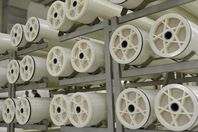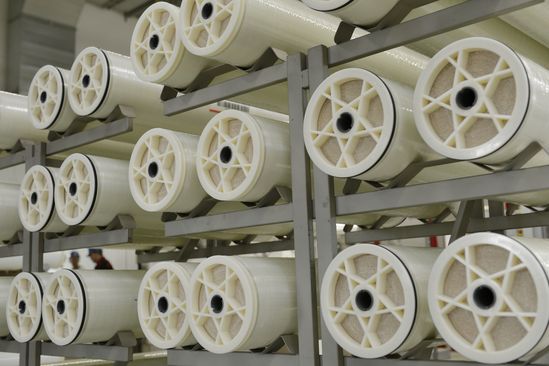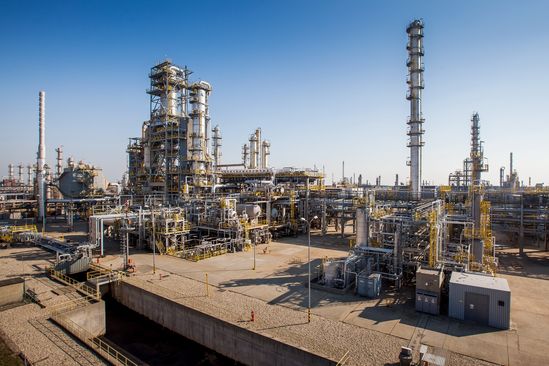Asia
EMEA

LANXESS Canada Contacts
Contact our Sites in Canada
Media Inquiries
General Inquiries
Please click here to e-mail LANXESS Canada with product inquiries and general requests.
Global Press Releases
2015-09-11
Reverse osmosis – Efficient and reliable
- Important reference project for Lewabrane products in Slovakia
- 630 membrane elements from LANXESS produce fully demineralized water for Slovnaft refinery in Bratislava
- Company’s own LewaPlus software used for the combined design of ion exchange and reverse osmosis systems
“The reverse osmosis facility at the Slovnaft oil refinery in Slovakia currently is the largest reference project in Europe for our brackish water membrane elements,” said Alexander Scheffler, Director Membrane Business in the LANXESS Liquid Purification Technologies business unit. SLOVNAFT, a.s. in Bratislava is the leading supplier of refinery products in Slovakia and it produces a broad range of petrochemical raw materials. The company is a member of the Hungarian MOL Group.
In December 2014, a total of 630 Lewabrane RO B400 HR membrane elements went into operation in the refinery complex's water treatment plant. HR stands for high rejection, because these elements support an unusually high level of salt rejection and thus ideal permeate quality. They have been running stably and reliably at Slovnaft for over eight months now.
High demands easily fulfilled
The raw water for the plant is sourced from the Danube. It contains between 320 and 400 mg/l dissolved solids with seasonally fluctuating organic fractions, and it displays an electric conductivity of up to 580 μS/cm. During treatment, it first undergoes chemical pretreatment (coagulation, flocculation) and ultra-filtration, before continuing on to the reverse osmosis (RO) system, which is divided into five separate lines, each equipped with 126 membrane elements. The three-stage demineralization facility can turn out up to 135 cubic meters of permeate per hour and line, and the maximum conductivity falls far below the target value stipulated by the operator of 15 μS/cm. The system has a permeate yield of up to 85 percent. In the subsequent cleaning stage, also mixed bed ion exchange resins from LANXESS' Lewatit line are used to remove any remaining ionic compounds. The facility produces fully demineralized water that is available as boiler feed water for water-steam circuits and other technical purposes.
Calculations with the LewaPlus design software, developed specifically for Lewabrane and Lewatit products, already showed in the planning phase that permeate conductivities of less than 10 μS/cm could be expected. Accordingly, this meant less of a burden on the mixed bed ion exchange resins. “We met all these expectations, and that makes us very optimistic about easily fulfilling all the performance guarantees we granted to the customer,” Scheffler confirmed.
Significantly longer dwell times
Compared to the other membrane elements used in previous years, the new system displays significantly longer dwell times. “We used to have to go through the cleaning regimen every four to six weeks, but the magnitude of pressure decline and the conductivity did not increase with the elements from LANXESS until after four months. After cleaning, the elements were back up to the same performance level as when they went into operation,” said Peter Šrámek, head of Slovnaft refinery.
Overall, the longer intervals between cleanings reduced the consumption of cleaning chemicals and increased the availability of the RO lines. Similarly, the low salt content of the permeate extends the regeneration intervals of the mixed bed ion exchange system, further cutting costs.
For detailed information on LANXESS' complete product range for water treatment with reverse osmosis and ion exchange, go to www.lpt.lanxess.com.
The Liquid Purification Technologies business unit is part of the LANXESS Performance Chemicals segment, which generated sales of EUR 2,193 million in 2014.
LANXESS is a leading specialty chemicals company with sales of EUR 8.0 billion in 2014 and about 16,300 employees in 29 countries. The company is currently represented at 52 production sites worldwide. The core business of LANXESS is the development, manufacturing and marketing of plastics, rubber, intermediates and specialty chemicals. LANXESS is a member of the leading sustainability indices Dow Jones Sustainability Index (DJSI World and DJSI Europe) and FTSE4Good.
- Gallery






